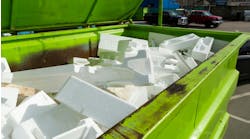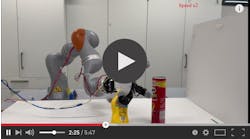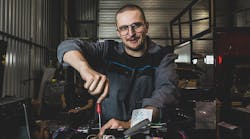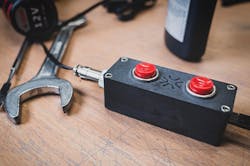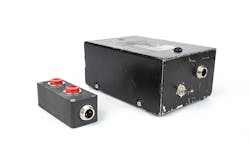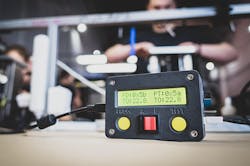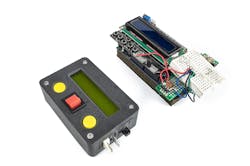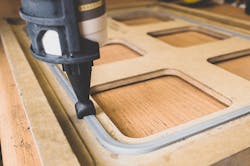Szymon Grabowski is a young, talented technician whose professional career is just beginning. A few months ago, he started working on assembling 3D printers. Today, he creates tools to optimize the production of an international technology company. How did he achieve it?
Talent, Common Sense and 3D Printing
Being the son of a seamstress, Szymon learned that standardization leads nowhere. Now, more than ever before, we need dedicated solutions tailored to our needs and goals. Not only individuals are facing this challenge. It is a game that companies around the world have to play. Fortunately, Szymon took not only knowledge from home, but also a talent for designing useful, tailor-made solutions. However, he exchanged the sewing machine into a 3D printer.
Instinctively, he saw the future of 3D printing. Additive technology is among the fastest growing sectors of the global economy. According to the estimation, this market will grow more than 23% between 2018 and 2024. It can be said that Szymon found himself in the right place at the right time, but that's only part of the truth. Above all, he found himself where he wanted to, because he was not afraid to change.
His story with 3D printing began in an electric technical school. There was a 3D printer in the school workshop. Simple, cheap FDM construction. This most popular and inexpensive 3D printing technology was everything that a school could afford 10 years ago.
Despite numerous limitations, it allowed creating missing parts for electronic devices, casing, latches, and other essential elements. For Szymon, it was a discovery. Thanks to 3D printing, he was able to design and produce small electronics accessories almost without restrictions. After finishing school, he decided to get involved with 3D printing and get to know it from the inside out.
From the Production Line to R&D
Soon, he joined Sinterit, a Polish producer of 3D printers operating in SLS technology. These types of devices offer much greater opportunities than FDM's school ones, but it is not so easy to produce one. Until now, you can count on the fingers of one hand companies that have developed small SLS 3D printer. Fortunately, one of them is in Krakow, Poland.
Szymon has come a long way, learning the design of Lisa and Lisa Pro printers working on their production lines. He realized quite quickly that some processes could be accelerated and improved. The bane of innovative industries such as rapid prototyping is the lack of standard tools and solutions. There are no stores with devices for calibrating printers. Each company creates its own solutions, which most often look horrible as the first personal computers. With loose cables and ugly, large housing. Szymon decided to improve these devices. Give them a new form, a safe and handy packaging that ensures longer, trouble-free work. Soon he was promoted from the production line to the R&D department and the game was afoot.
"Bed Tester"
The first device he redesigned is called the "bed tester". Under this enigmatic name, you can find some very important subassembly of the SLS 3D printer. People who are not familiar with the SLS technology may not know that the printing process involves sintering a powder by a laser, layer by layer. The powder is transferred between the two printer chambers, called beds. In the chambers, there are platforms moving up and down. The right hight of the layer depends on their proper functioning. In Sinterit printers case layers can be as thin as 0.75 mm. The bed tester designed by Szymon is a handy device that has replaced a large box created from a custom packaging of electrical devices.
"It took me 12 hours to create a new device. During this time, I redesigned the electronics and drew a housing design," says Szymon. "I printed the finished project on a 3D printer Lisa and assembled the whole thing. It took me just over one business day. As a result, I was able to create a device ready for work right away," he adds.
Temperature Under Control
A somewhat more advanced device is a pyrometer tester. Pyrometers are very accurate sensors that monitor the temperature inside the printer. Ensuring a constant temperature is a key condition without which SLS 3D printing is not possible. Before sending printers to customers, each of the pyrometers is thoroughly tested. Szymon came across a tester that looked like a bundle of loosely connected cables and printed circuit boards. As it is not difficult to guess, this device was easy to damage, and the device itself wasn't convenient to use.
After redesigning by Szymon, the new tester gained more functionality, but above all reliability. As in the case of the bed tester, the entire process of designing, printing, and assembling took 12 hours.
Not Only Electronics
Despite his knowledge and electronic experience, Szymon perceives the production of printers as a whole process in which all elements should be improved. Not only the high-tech ones. After all, does the appearance of a silicone tube nozzle have any meaning?
It turns out that yes. Accurate and even siliconizing is not a simple art, especially for elements requiring a very precise, but also minimalist application of the sealing substance. Instead of taking the time to improve the skills of individual employees on the production line, Szymon designed a personalized nozzle, thanks to which the application of the layer of silicone to the main seal of the printers is simple, and excludes the risk of failure.
If the creator of the "Principles of Management" Frederic Taylor could see Szymon's ideas, he would probably appreciate it. Innovation has many faces, but nothing can replace a common sense approach, a touch of talent, hard work and bold use of modern solutions like 3D printing.
Szymon is only 23 years old and despite the fact that the affair with additive technology does not last long, he gained knowledge and freedom to move around completely new areas. This is a sign for other technicians and engineers eager for knowledge. Today's world opens up many possibilities unavailable for previous generations. It is worth using them to change the reality that surrounds us.
